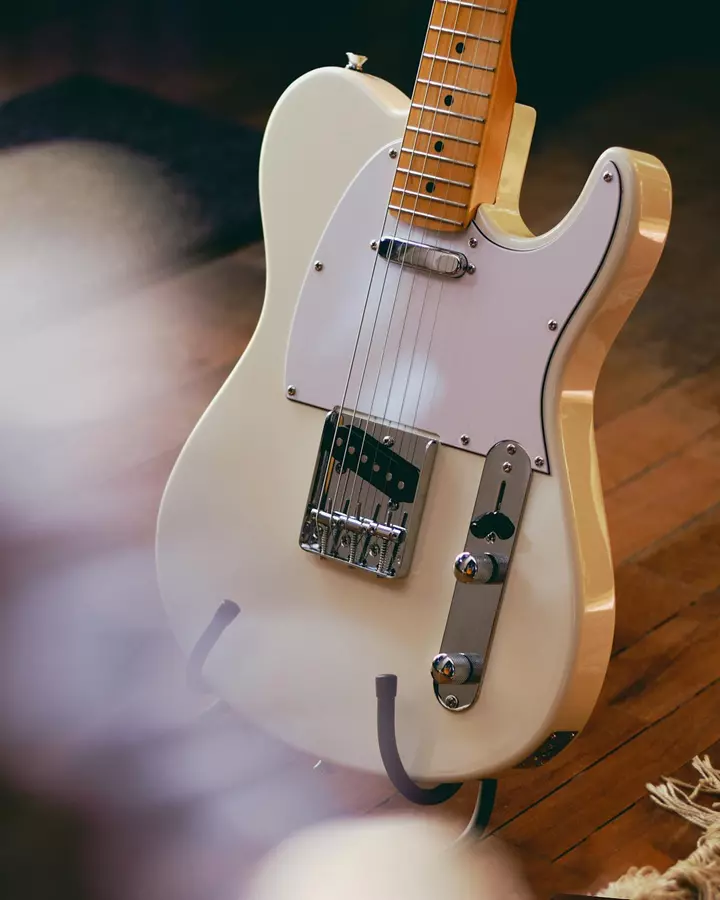
Revolutionary guitar designs you need to know about

Innovative materials changing the game
In the world of guitar design, materials play a crucial role in defining the instrument’s sound, feel, and durability.
Recent advancements in material science have introduced innovative options that are transforming traditional guitar construction. For example, composite materials like carbon fiber and resin blends are now used to create lightweight yet highly durable guitar bodies. These materials not only enhance the instrument’s resistance to environmental changes but also offer a unique tonal quality that sets them apart from traditional wood guitars.
Another revolutionary material is the use of aluminum and titanium in guitar necks and hardware. These metals provide exceptional strength and stability while maintaining a relatively low weight. Aluminum, in particular, offers a sleek, modern aesthetic and can be machined into intricate designs that are both functional and visually striking. This innovation is gaining popularity among guitarists who seek both performance and style in their instruments.
Additionally, some manufacturers are exploring the use of sustainable materials like bamboo and reclaimed wood. These eco-friendly options not only contribute to environmental conservation but also provide a unique aesthetic and tonal quality. Bamboo, for example, has a naturally resonant quality that can produce warm, rich tones, while reclaimed wood adds a sense of history and character to the instrument.
Groundbreaking electric guitar designs
The evolution of electric guitar design has brought about several groundbreaking innovations that are redefining the genre. One notable example is the development of multi-scale or fanned fret guitars. This design features frets that are angled to accommodate different string lengths, resulting in improved intonation and playability across the entire neck. Guitarists who play a wide range of styles and tunings often find these instruments particularly beneficial.
Another significant advancement is the integration of advanced electronics and onboard effects. Modern electric guitars often come equipped with built-in preamps, digital signal processing, and modeling technology that allow players to access a wide range of sounds and effects without needing external gear. This integration simplifies setup and enhances versatility, making it easier for musicians to experiment with different tones and effects in real-time.
Designs such as the headless guitar, which eliminates the traditional headstock in favor of a more compact design, are also gaining traction. This approach not only reduces the overall weight of the instrument but also provides a unique look and improved tuning stability. Headless guitars are becoming increasingly popular among progressive and experimental musicians who value both form and function.
Revolutionary acoustic guitar innovations
Acoustic guitars have also seen remarkable innovations that enhance their performance and playability. One such innovation is the introduction of advanced bracing patterns and materials. Traditional X-bracing is being replaced or supplemented with more modern designs, such as lattice bracing, which improves the guitar’s resonance and projection. These new bracing patterns allow for greater tonal flexibility and dynamic range.
Additionally, some acoustic guitars now feature built-in pickup systems and preamps that provide high-quality amplification without compromising the instrument’s natural acoustic sound. These systems often include features such as tone and volume controls, as well as built-in tuners, making them ideal for live performances and recording sessions.
Another exciting development is the use of innovative body shapes and sizes that offer unique tonal characteristics. For example, smaller-bodied guitars, such as parlor or travel guitars, are designed to deliver a more focused sound with enhanced portability. These designs cater to musicians who need a compact instrument without sacrificing sound quality.
Hybrid guitars: merging electric and acoustic elements
Hybrid guitars, which combine elements of both electric and acoustic guitars, represent a fascinating trend in modern guitar design. These instruments often feature a combination of solid and hollow body construction, allowing for a versatile range of sounds. By blending the sustain and power of electric guitars with the resonance and warmth of acoustics, hybrid guitars offer a unique playing experience.
One popular example of a hybrid design is the semi-hollow body guitar, which includes both solid and hollow sections within the body. This construction provides a balance between the sustain and feedback resistance of solid-body guitars and the tonal warmth of hollow bodies. Musicians who perform across different genres often appreciate the versatility of these instruments.
Another hybrid design includes guitars with switchable pickups that can toggle between electric and acoustic sounds. These guitars are particularly useful for musicians who need to quickly switch between different tones during a performance. The ability to seamlessly transition between sounds without changing instruments offers significant advantages in both live and studio settings.
Customizable guitars: tailoring to your preferences
The rise of customizable guitars has empowered musicians to create instruments that perfectly suit their personal preferences and playing styles. Many guitar manufacturers now offer extensive customization options, allowing players to choose everything from the type of wood used to the shape of the neck and the style of the inlays. This level of personalization ensures that each guitar is unique to its owner.
Customizable features often extend beyond aesthetics to include functional elements such as pickup configurations, bridge types, and fretboard materials. Musicians can select components that enhance their playing experience and achieve the exact sound they desire. This bespoke approach to guitar design has become increasingly popular among serious players and collectors.
In addition to factory-customized guitars, there is also a growing market for independent luthiers who build custom guitars from scratch. These artisans offer a level of craftsmanship and attention to detail that is unmatched by mass-produced instruments. For those seeking a truly one-of-a-kind guitar, working with a skilled luthier can be a rewarding experience – musical instruments.
The future of guitar design
As technology continues to advance, the future of guitar design holds exciting possibilities. Emerging technologies such as 3D printing and augmented reality are poised to revolutionize the way guitars are designed and manufactured. 3D printing, for example, could enable the creation of intricate and highly customizable guitar parts with unprecedented precision.
Augmented reality may also play a role in guitar design by allowing musicians to visualize and test different designs virtually before making a purchase. This technology could provide a more immersive and interactive experience for players, helping them make informed decisions about their instruments.
Overall, the ongoing evolution of guitar design reflects the dynamic nature of the music industry. As new materials, technologies, and techniques continue to emerge, guitarists can look forward to an ever-expanding range of innovative and inspiring instruments. The future of guitar design promises to be as exciting and diverse as the music it helps to create.